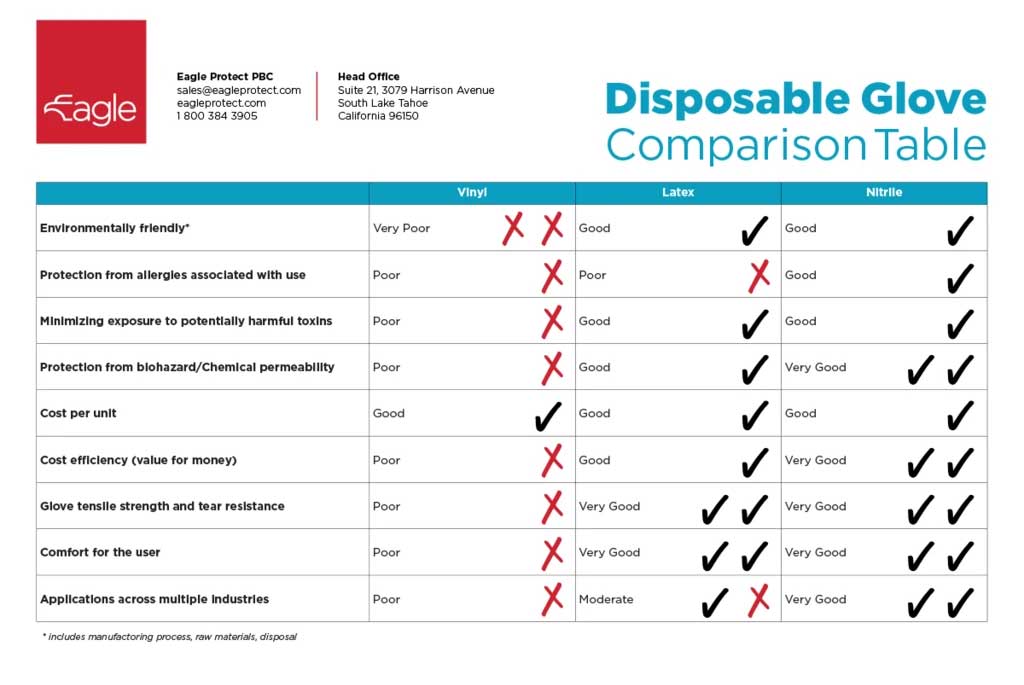First, what are vinyl gloves? Vinyl gloves are made of polyvinyl chloride (PVC) and are latex-free (made from synthetic rubber). Since vinyl gloves are not form-fitting, they fit more loosely than latex and nitrile and will cost less. Also, the level of protection is much lower than using latex or nitrile. They are normally used for cleaning, food prep, and other industrial environments. They will puncture easier than latex or nitrile.
Before purchasing any type of glove, whether it be latex, nitrile, or vinyl, you have to ask yourself a few things
- What amount of protection are you looking for?
- Are you allergic to any materials that the glove is made from?
- The quality of the glove and how it’s made?
- Powdered or Unpowdered?
- The comfort of the glove?
- The size of the glove?
If protection is your major concern, there a few things you should know about Latex, Nitrile, and Vinyl gloves how they’re made. There are three standard measures that protective gloves are scaled upon.
Medical Grade – (Nitrile Gloves) For medical use. Highest grade of protection. These gloves are thoroughly tested to pass FDA requirements and exceed a broad range of demanding specifications.
High Risk – (Latex Gloves) For use in the emergency medical services fields. High levels of testing are required to assure proper requirements.
Utility Grade – (Vinyl Gloves) Not intended for medical use and not tested for FDA specifications. These gloves are great if detail is a necessity. Normally used for painting and general hand protection. They are manufactured to ASTM (American Society for Testing and Materials) specifications.
Here is a table covering the strengths and weaknesses of certain gloves.

Powdered Vinyl Gloves – Cornstarch is often added to vinyl gloves to make putting on the glove as smooth as possible. A powdered glove will usually cost less than non-powdered.
Glove Size – Most gloves are available in XS, small, medium, large, and XL sizes. Gloves can be manufactured with different cuff lengths, textures, thickness and other characteristics. Use the bullet list below to determine the size you’ll need.
- Use a tape measure to determine your correct hand circumference in inches. Measure at the widest part of the hand.
- The chart below shows you how to find the glove size closest to the hand measurements in inches.
- Sizes may vary among manufacturers and styles.
Make sure not be store vinyl gloves under conditions of excess heat or light, since this will cause more rapid rubber degradation.
